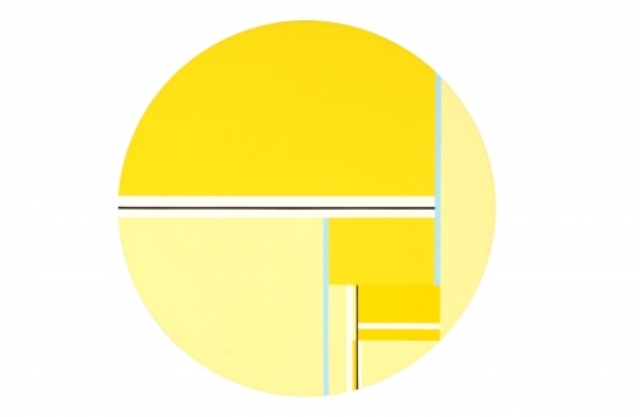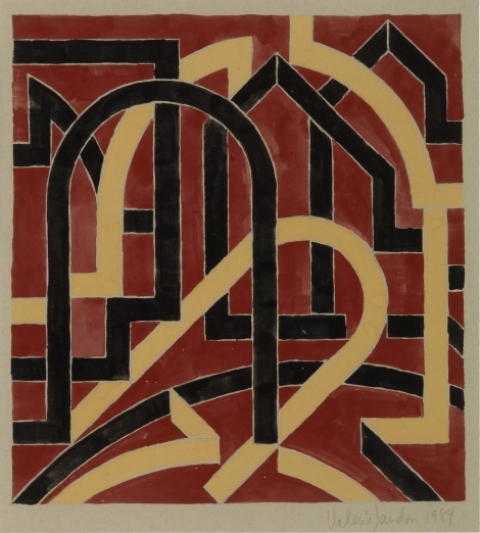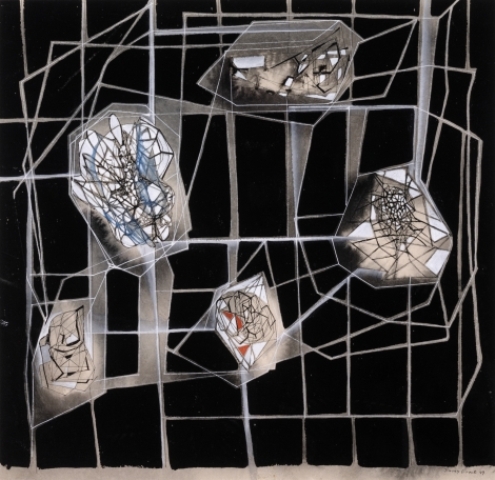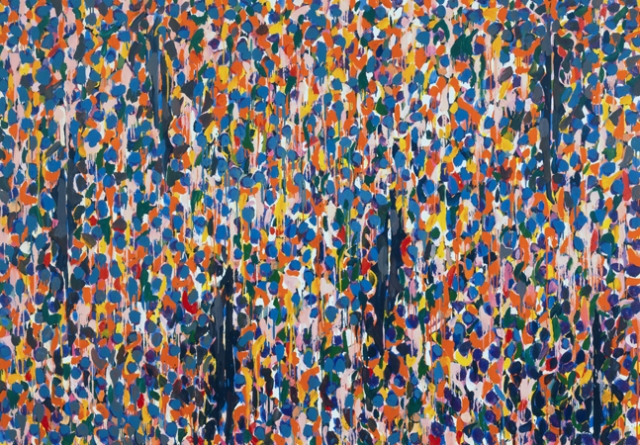In two current exhibitions at the Parrish Museum—featuring works on paper in one and on canvas and in sculpture in the other—viewers are reminded throughout of the ongoing and storied impact of abstraction on the evolution of contemporary art.
Interestingly, this reminder seems to be a continual and unfortunate necessity because, despite its longevity as a legitimate component in the firmament of art history, abstraction is still viewed in many quarters as a notoriously suspect approach to the creative process. Often condemned as the domain of those who simply can’t draw, nonobjective art has been marginalized repeatedly over the past century by revisionists and used as a truncheon against the artistic community by political reactionaries who attack abstraction—and thereby the art world as a whole—for perpetrating a molestation of traditional aesthetics as well as representing nothing more than an elaborate con game.
This, of course, ignores the ethereal notion that abstraction allows the viewer to encounter the expressive power inherent in pure form, which, as Arshille Gorky observed, “enables the artist to perceive beyond the tangible and extract the infinite out of the finite.” Instead, nonrepresentational art has often been denigrated as little more than the product of self-promotional elitists intent on sacrificing the purity of classical culture on an alter of audacious garbage.
Or, as the late conservative cartoonist and social commentator Al Capp once declared, “abstract art is a product of the untalented, sold by the unprincipled to the utterly bewildered.”
In short then, for those who might usually prefer the classicist stylings of Arno Brecker or the patriotic musings of Tea Party icon John McNaughton, these two exhibitions at the Parrish would definitely be something of a disappointment.
In the exhibition of works on canvas, traditionalists would, for example, truly despise Ilya Bolotowsky’s Golden Tondo (acrylic on canvas, 1978), which is a superb example of this painter’s dedication to modernist principles derived from the influences of both Piet Mondrian and the artists of the De Stijl movement. Serving as a flawless reflection of the austere elegance of neoplasticism, Bolotowsky’s work uses only primary colors and reduces and simplifies the surface composition through a powerful manipulation of horizontal and vertical components.
.

"Golden Tondo" by Ilya Bolotowsky, 1978. Acrylic on canvas 47 1/2 inches in diameter. Parrish Art Museum, gift of John Hearst, Jr., 1987.1.1.
Jack Youngerman’s Conflux II (oil on carved Baltic beech plywood, 2003), on the other hand, approaches geometric abstraction in a manner that is decidedly more playful: he energetically deconstructs and orchestrates the surface dynamics of the work. Conjuring highly lyrical movement that quietly swirls in a gentle rotation of monochromatic grace, this effect is accentuated by an insistent pulsating sensation that constantly draws the eye toward the center of the work.
By contrast, the vibrant movement in John Torreano’s P.M.’s Mum (painted and incised plywood with plastic, 1985) is distinctly more frenetic, with the writhing calligraphic strokes taking on noticeably organic properties. These elements serve less to orchestrate the structure within the work than to become the structure itself, albeit as a constantly transformational entity that succinctly illustrates the poet Denise Levertov’s description of form as “an intuition of order.”
.
.
These fundamentals are also present in Richmond Burton’s Zone (oil on linen, 1995) while Dan Christensen’s Oreo (acrylic on canvas, 1990) uses a combination of soft-edged geometric imagery and light to conjure a sense of motion that is closer to a gentle pulsating sensation rather than an abrupt and tangible feeling of physical gesticulation.
.
This distinction between gestural and geometric abstraction continues in the other exhibition, featuring works on paper, with artists such as Elaine de Kooning and Michael Goldberg using slashes of vibrant brush strokes juxtaposed with pulsating splashes of color that emphasize their mutual dependence on the power of negative space. Stephen Mueller and Richard Kalina, on the other hand, offer rather dreamlike reveries that use composition, a confident use of color, and a definite sense of structure to convey their concepts.
.

"Cremona" by Richard Kalina, 2006. Watercolor and ink on paper, 22 1/2 x 30 inches. Parrish Art Museum. Gift of Richard I. Adrian, 2012.14.41
.
One artist represented who manages to traverse the delicate tightrope between gesture and geometry is the late Jimmy Ernst (full disclosure: my father). In his work Untitled (watercolor and gouache on paper, 1949), the artist creates a subtle architectonic framework in which organic forms float in a painterly universe of silence.
The images themselves are constructed of spontaneously drawn webs of delicate line, while the monochromatic aspects are powerfully emphasized by minuscule elements of color, the combination of which expresses a pictorial homage to both science and spirituality.
.

"Untitled" by Jimmy Ernst, 1949. Watercolor and gouache on paper, 17 x17 inches. Parrish Art Museum, gift of Dallas Ernst, 2009.17.
BASIC INFO: “Abstractly Speaking”: "Painting and Sculpture from the Parrish Permanent Collection" and "Works on Paper from the Parrish Permanent Collection" is exhibited from March 8 through April 14, 2014 at the Parrish Art Museum, 279 Montauk Highway, Water Mill, NY 11976. www.parrishart.org.
_______________________________
Copyright 2014 Hamptons Art Hub LLC. All rights reserved.



